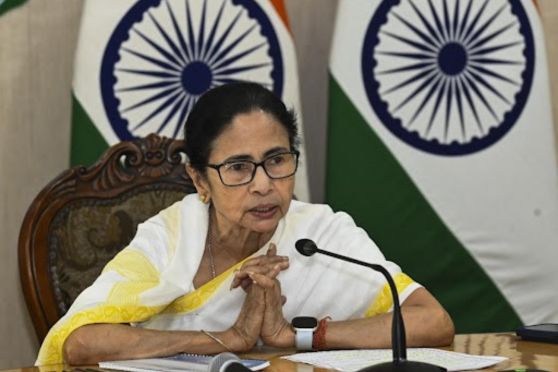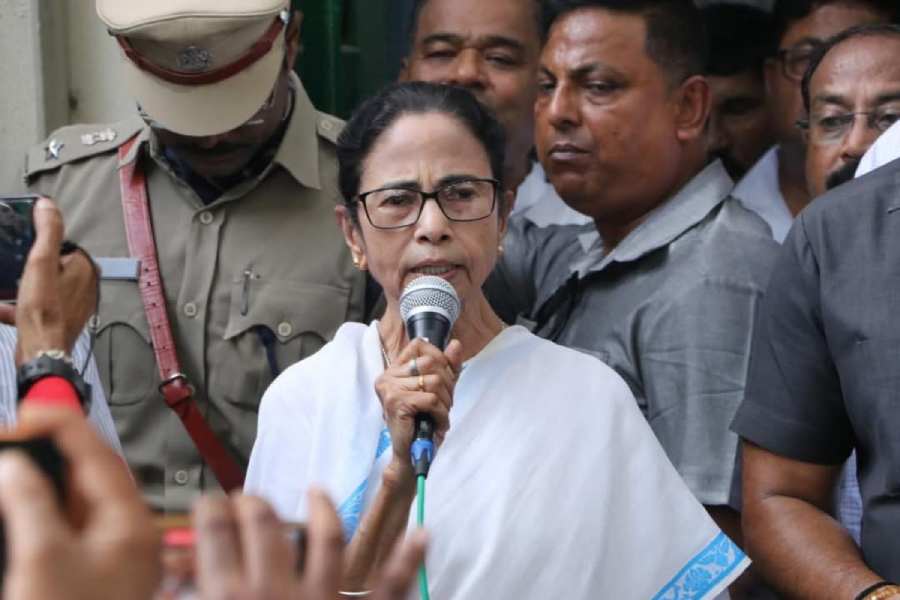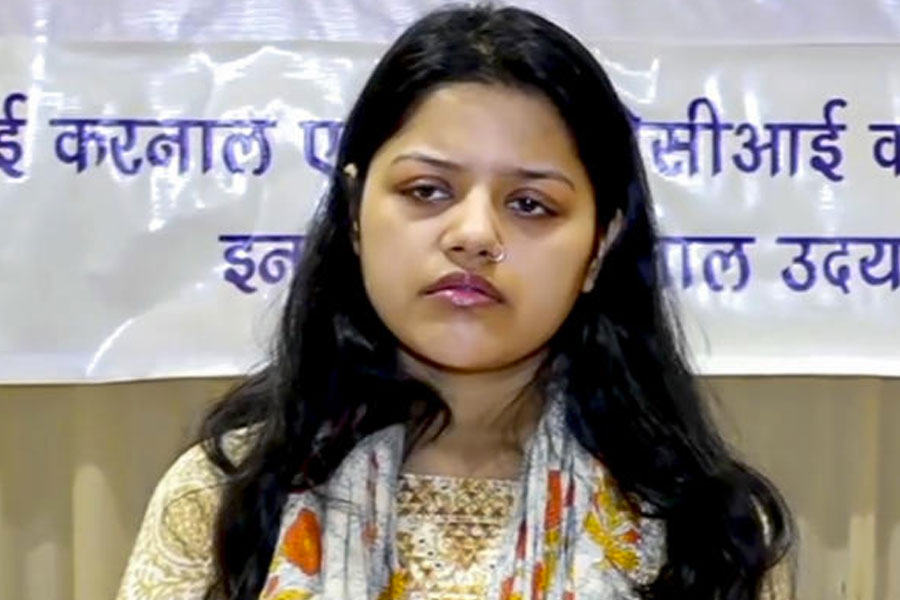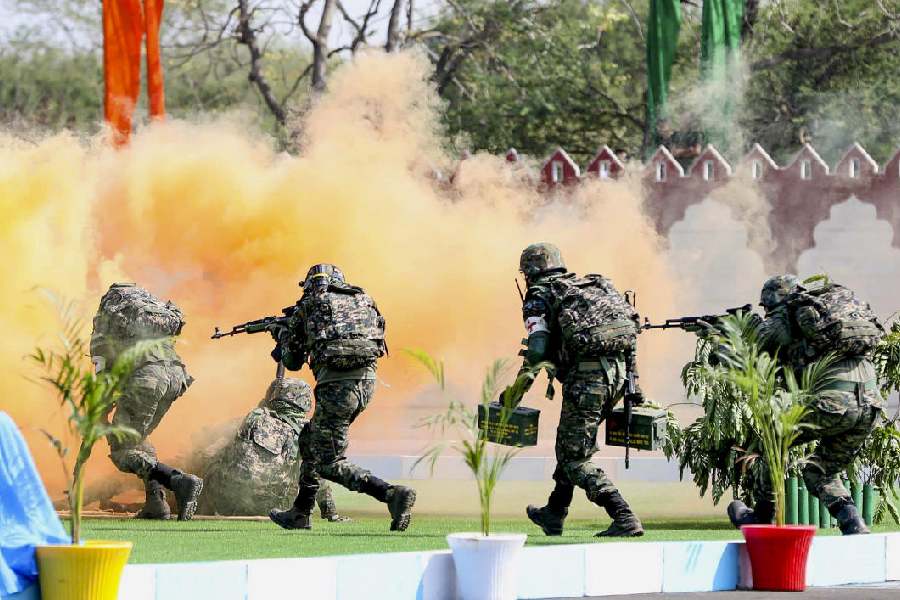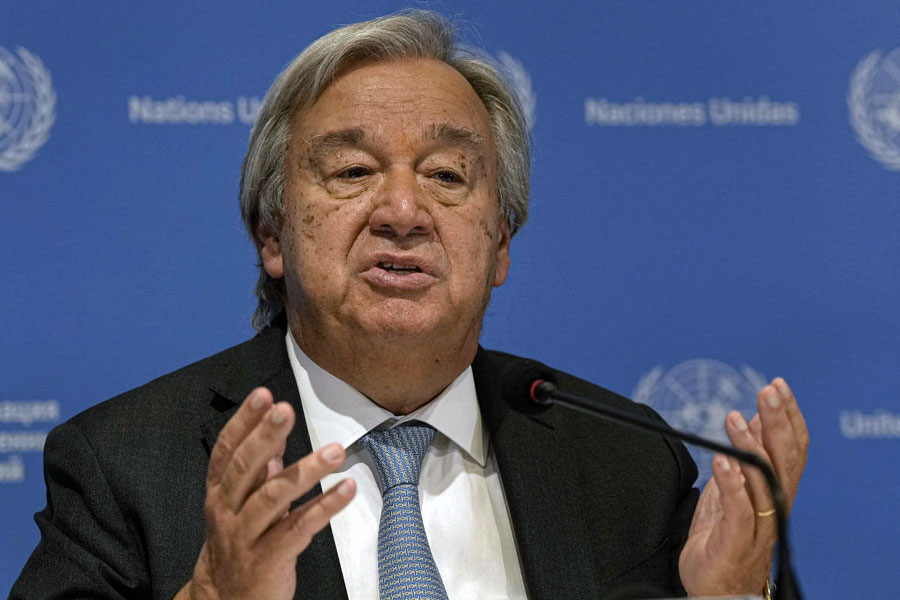 |
| Prime Minister Narendra Modi, Chinese President Xi Jinping and his wife Peng Liyuan admires statues of lion cubs on the Sabarmati river front in Ahmedabad on Wednesday. (PTI) |
Ahmedabad, Sept. 17: Prime Minister Narendra Modi had yesterday said he wanted foreign leaders to step outside Delhi to flavour the rest of India. But on Wednesday in his home state of Gujarat, he dished up for visiting Chinese President Xi Jinping an experience as close to China as India can offer.
Xi landed here today afternoon at the start of his three-day India trip to a reception Gujarati in substance, but very Chinese in style — marked by clockwork precision, a carefully orchestrated display of Ahmedabad’s development and restrictions on the local population.
And early evening, Modi and Xi oversaw the inking of three agreements that, though focused on Gujarat, are rooted in India’s deeper drive to emulate the manufacturing-driven Chinese economic model, epitomized best by its southern province of Guangdong.
“President Xi felt very much at home, that I can tell you,” a Chinese official told The Telegraph, on strict condition of anonymity.
Xi’s trip to Ahmedabad, where he landed from Colombo after visiting Sri Lanka and earlier the Maldives, is very much a starter to the main course of his India journey – official, delegation-level talks in New Delhi tomorrow. There, Modi and Xi are expected to thrash out how to increase Chinese investment in India.
The Chinese President is expected to promise $100 billion worth investments in India over the next five years – more than twice the $34 Japan, China’s strategic rival, promised in Tokyo when Modi visited a little over two weeks back.
In Delhi, Modi and Xi are also expected to discuss the Chinese President’s proposal for a maritime silk route, diplomatically heavy subjects such as like Afghanistan, and the tricky border dispute that has flared up yet again in Ladakh.
But Modi on Wednesday grabbed the reins of the starter event, rare for what was essentially a state government’s interaction with the Chinese President, receiving Xi at the Hyatt hotel in the city’s Vastrapur and then delivering a crash course on ancient ties between China and Gujarat.
“Many Buddhist sculptures have been found here,” Modi was caught telling Xi in a hot-mic moment, pointing to a set of four exhibits on Gujarat’s Buddhist links that had been put up on the walls of the hotel’s main corridor.
Xi replied, and his translator, also heard, said the Chinese President found a resemblance between an excavated sculpture displayed there, and Buddha’s portrayal in China.
Later, watched by the Indian PM and Chinese President, Gujarat and the Chinese province of Guangdong signed a “sister-province” agreement.
Ahmedabad and Guangzhou, the capital of Guangdong, inked a pact declaring themselves “sister-cities.” Gujarat and China also signed a third memorandum of understanding – one that will allow China to set up an industrial park expected to employ upto one lakh people. In the audience were Gujarat’s top industrialists like Gautam Adani and Rajiv Modi.
“China has traditionally not invested much in India, but we believe this is a major start,” D.J. Pandian, the additional chief secretary for industry in Gujarat said, responding to a query from The Telegraph.
“They obviously feel Gujarat is a good place to experiment first.”
Guangdong, once the exporter of most Chinese immigrants – Chinatowns around the world were till a decade back dominated by people from the province – is now one of the country’s biggest manufacturing hubs, and the engine of its exports.
The Chinese-made toys, clothes and electronic goods the world uses today are manufactured mostly in factories that dot the Pearl River valley in the province.
India has long-eyed the province’s transformation as a model to emulate. Chinese firms too have been keen to invest in India, attracted by its market, yet till now looked at with suspicion.
But the agreements, though meaty, were quickly shadowed in symbolism by a visit by Xi and Modi, followed – as was the routine through the day — by hand-picked cameramen and no reporters, to Sabarmati Ashram.
Xi, who had changed from a formal suit into a Nehru jacket, turned a chakra, and away from even the selected camera personnel, Modi gifted the Chinese President a photograph of the Chinese community in Johannesburg greeting Mahatma Gandhi.
Modi and Xi then walked along the Sabarmati riverfront for half an hour – the Chinese President and his wife Peng Liyuan earlier sat on a traditional swing and a charpoy – before entering one of four temporary pagodas erected for their dinner along the waterfront.
But the waterfront – one of Modi’s favourite accomplishments from his time as Gujarat chief minister – was officially shut for the public and the press almost two full days before Modi and Xi reached there.
Residents of apartments next to the Hyatt were told not to open their windows, and the shops on the roads adjoining the hotel, akin to the way Beijingers are ordered to stay indoors on key occasions in the Chinese capital.
Shops and slums along the roads Xi travelled today were blocked off from street view by a green façade.


